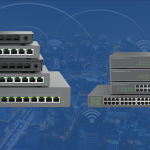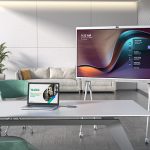VoIPon Interview Sangoma, a leading provider of Asterisk Hardware, VoIP Gateways and software components that enable or enhance IP Communications Systems.
Kathleen Reed discusses with Frederick Dickey, Product Manager at Sangoma technologies the successful launch of the Sangoma A116 16 Port Board. They also cover the initial market reaction to the product and why to choose a Sangoma 16-port board over a comparable external solution.
Listen to the Podcast and see the interview transcript below:
VoIPon: Sangoma’s hardware has always been known to be of exceptional quality and stability. However as I understand it, it has reached limitations as to how many concurrent calls it could process on one server due to third-party hardware factors – for example, server processing speed and choice of software run by the solution provider or end-customer that were outside of its control. Why don’t you introduce the 16-port board now?
Frederick Dickey: Okay. Running telecom applications on computers is always a challenge because they are real-time applications. But at Sangoma, we’ve always addressed the need to run and, I guess, to push the envelope of the number of ports, the number of channels you can run in the computer. Basically, it goes around in what we call the Wanpipe, which is the trade name for the drivers that enabled our Sangoma Asterisk Cards boards to work in computers. We’ve always designed Wanpipe in a way that you would (depending on its type of capacity for the telecom system that you’re building) allow you to scale, way more than any other technology. Internally and externally as well, we call this ‘adjusting the chunk size.’ An example of pushing the envelope – over three years ago, we were the first to introduce the 8-span boards that we’ve called the Sangoma A108 which included the following types, Sangoma A108 PCI PRI ISDN Card, Sangoma A108D PCI PRI ISDN Card, Sangoma A108DE PCI Express PRI ISDN Card and the Sangoma A108E PCI Express PRI ISDN Card.
That’s a good, solid, three or four years before our competition and our competition is probably just leveraging the fact that now we have more powerful computers. But at the same time, we also have customers; we also have implementations that ran all the way to 32 spans. The reason for a 16-port card is because, again, we’ve always pushed the envelope. We’ve always enabled our customers to build large scale telecom applications and hence there is the need for 16 spans. It is more or less for operational reasons.
Most of our customers will co-locate their equipment. They will have to rent that space and power. Those are two factors that directly impact the cost of your implementations. Delivering this kind of density (combined with our Wanpipe designs) what we provide to our customer is this usually valuable, recurring savings in operational costs. That’s the main reason why we’ve come up with this kind of density.
Kathleen Reed: How stable are this many ports in one card?
Frederick Dickey: Well, I guess I had spoken about the Wanpipe, but still the answer is still on Wanpipe. At Wanpipe, as I’ve mentioned earlier, is this driver that we’ve designed that enables our boards to work in computer systems. These drivers have been evolving for the last 12 years. They run millions of ports of telecom systems – from small PBX systems all the way to very large call centers and IVRs. We’re just building on to the same kind of expertise and stability, so there’s no difference. You just have more ports, more spans, but running on the same kind of stability that we’ve been delivering for years and years. The Sangoma A116 comes in two models the Sangoma A116E PCIe, 16 spans, no H/W Echo Cancellation and the Sangoma A116DE PCIe, 16 spans, with H/W Echo Cancellation. Additionally you can purchase the Sangoma A116 1U Rack-Mountable Panel (SPEC-A116+PNLKIT) and the Sangoma A116 6-Feet punch down cable CBL-649 to go with these products.
Kathleen Reed: Okay. Great. So what sort of software does it work with? For example, will it be used to run your SS7 solution or have others gone FreeSWITCH and others caught up with the demand for such high call volume boards? Or is it a situation that if you build it, they will come?
Frederick Dickey: Yup. Again, three times in a row, it’s around Wanpipe. Wanpipe is this common theme, common driver that we have across. Every time we release a board product, Wanpipe enables this product to work in several means, so you could configure Wanpipe to get the boards to work directly with Asterisk, you can configure the boards to work directly with FreeSWITCH, you can configure the boards to use custom APIs, so if you are a developer and you want to build your own application from scratch, we’d provide that flexibility as well, depending on your preferences. There are integrators and developers out there who will like Windows though others prefer Linux, so we provide those two choices as well. Then, the last thing I forgot to mention is it’s also for data applications. Wanpipe can be configured to build (not just telecom applications) but also datacom applications, so this is again very flexible in many avenues. It’s basically common to all the board products that we provide.
Kathleen Reed: What is the minimum processing power that you’d want to run in a server, using a card such as this?
Frederick Dickey: Well, we’ll recommend at least Quad Core processors (but these are so common nowadays). Even regular $1000 servers will have two Quad Core processors. In fact, I just got myself a new laptop. It’s a tiny, small laptop and it has a Quad Core processor. So yeah, basically, a very common type of processors that is available everywhere but at least a Quad Core processor.
Kathleen Reed: What has the initial market reaction been to this product?
Frederick Dickey: Well, we didn’t make enough basically. We’ve released the product in late May, early June. We had an initial production that went out in just a few days. Right now, we’re catching up – building a lot more products because Sangoma has catered to higher density type designs. These boards were in high demand. Basically (and I think I have mentioned this earlier) by allowing to use less space and less power, our customers can build applications that are a lot less costly to operate. Operational savings is huge because it’s recurring. It happens every year and every year, day in, day out – so it allows them to be a lot competitive. We expect this product to be very successful at Sangoma.
Kathleen Reed: Okay. So you’ve mentioned the customers – where can you see such a card winding up in the market? Do you have any successful case studies you can touch on?
Frederick Dickey: Well, we’re kind of starting. Some people are now deploying. We don’t have the exact case studies results yet, but they will find themselves. Typical applications will be of course high-end, high density products like call center solutions, for instance. In Asia Pacific, we do sell a lot of the boards into what is called the MVAS (the Mobile Value Added Services market) where an application like colour ringback tone enhances the mobile networks. We have customers that build themselves very large gateways and the core of their networks does offer sip-trunking. We have customers deploying SS7 gateways for instance to provide the alternative carrier services, those kinds of applications – mostly in the carrier space or the very large enterprise space.
Kathleen Reed: Okay. Then finally, why choose a Sangoma 16-port board over a comparable external solution?
Frederick Dickey: I guess we have a very varied customer base. Some of our customers prefer to integrate, develop and build themselves full solutions. We have our corporate users that prefer to be simply users of the product. In general, those tend to be in the camp of “Provide, sell me your board and then I can control everything and build my own thing.” And then, in their corporate side of things, they tend to prefer external appliances. There is no assembly. There is just powering it up and configuring it. At Sangoma, we’re not trying to force one or the other; we’re just trying to provide the best solutions, depending on where you’re coming from. It depends I guess on the type of customers and what they’re looking for, but I guess we can provide the both angles to them.
Kathleen Reed: Thank you for joining us today Frederic.





